Nombre:
Puerto de Bremen/Bremerhaven
Otro:
Localización:
View Larger Map
Tipo: Puertos
Categoría:
Foto:
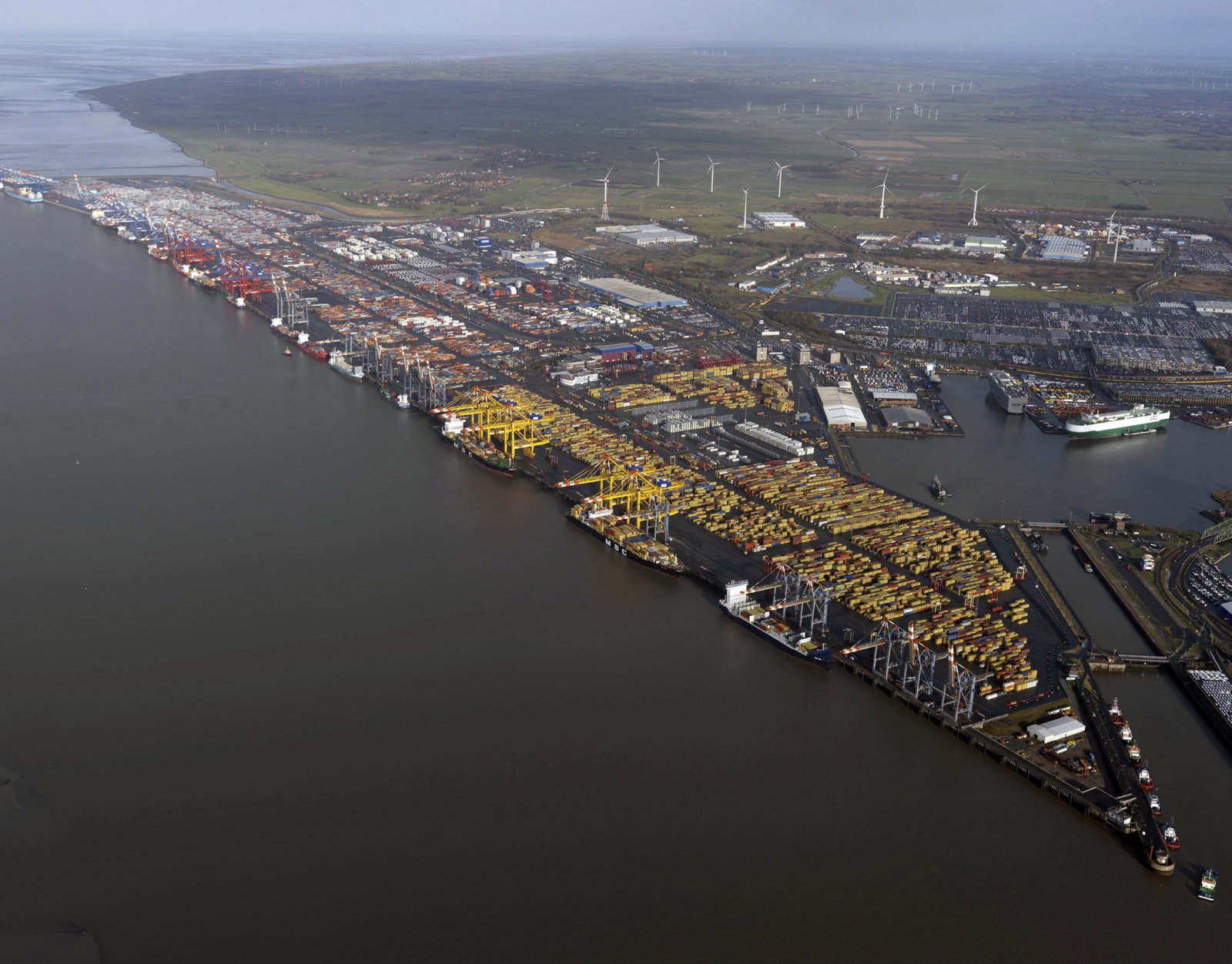
Voto:
Continente: Europa
País: Alemania
Localización:
Año: 1847
Estado: Terminado
Descripción:Port of Bremerhaven
The Port of Bremerhaven lies on both banks of the Geest River as it enters the eastern Weser estuary about 70 kilometers from the North Sea in northern Germany. The Port of Bremerhaven is about 20 nautical miles east of the Port of Wilhelmshaven on the western banks of the estuary and about 276 kilometers northeast of Amsterdam. In 2003, over 118 thousand people lived in the Port of Bremerhaven.
The Port of Bremerhaven is the seaport for the city-state of Bremen. While is a new city by European standards, it has long been an important port for trade, and it one of Germany's principal seaports. The Port of Bremerhaven is the fourth biggest container port in Europe and the world's sixteenth largest container port. More cars move through the Port of Bremerhaven than any other European city but Rotterdam.
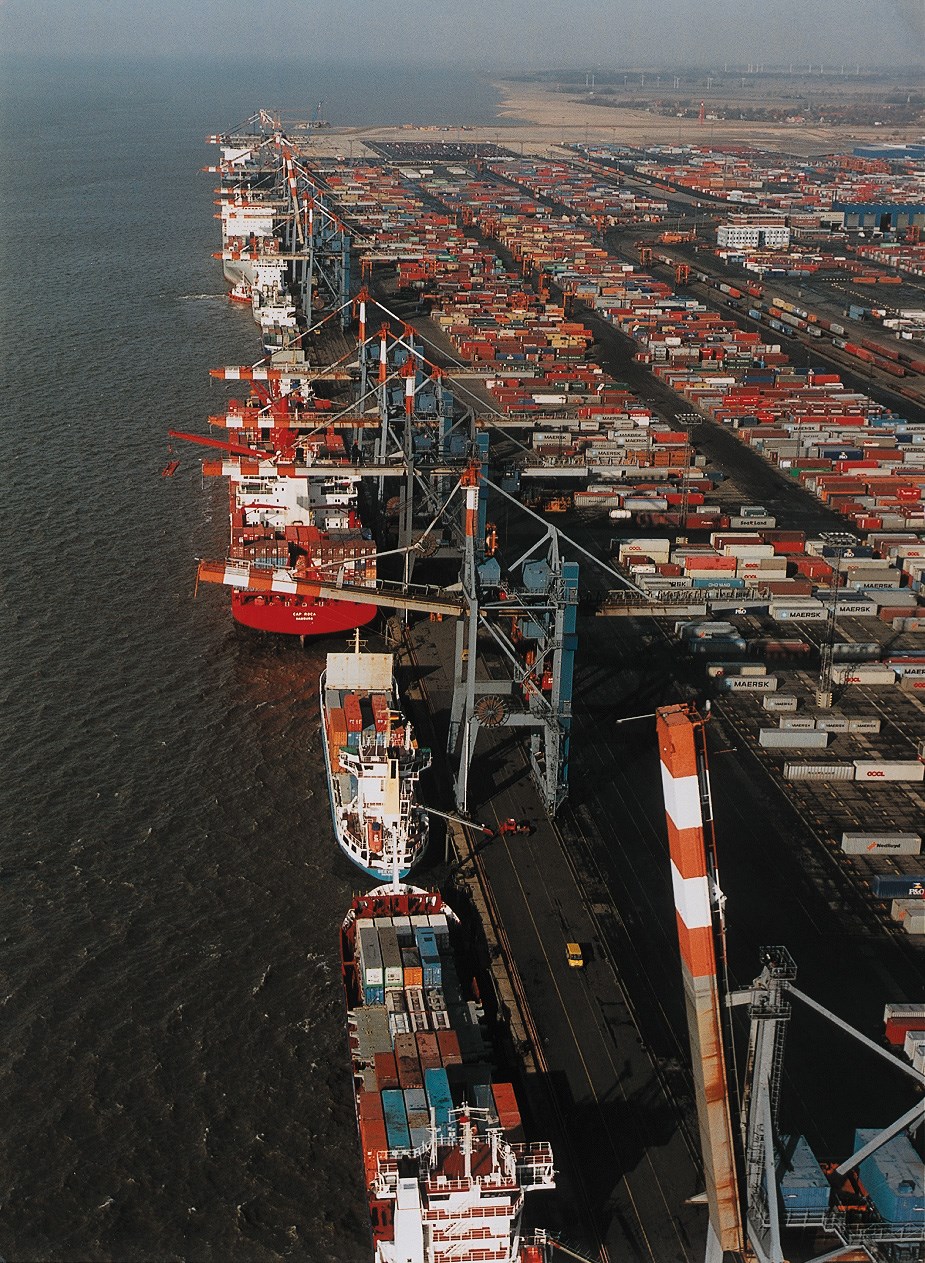
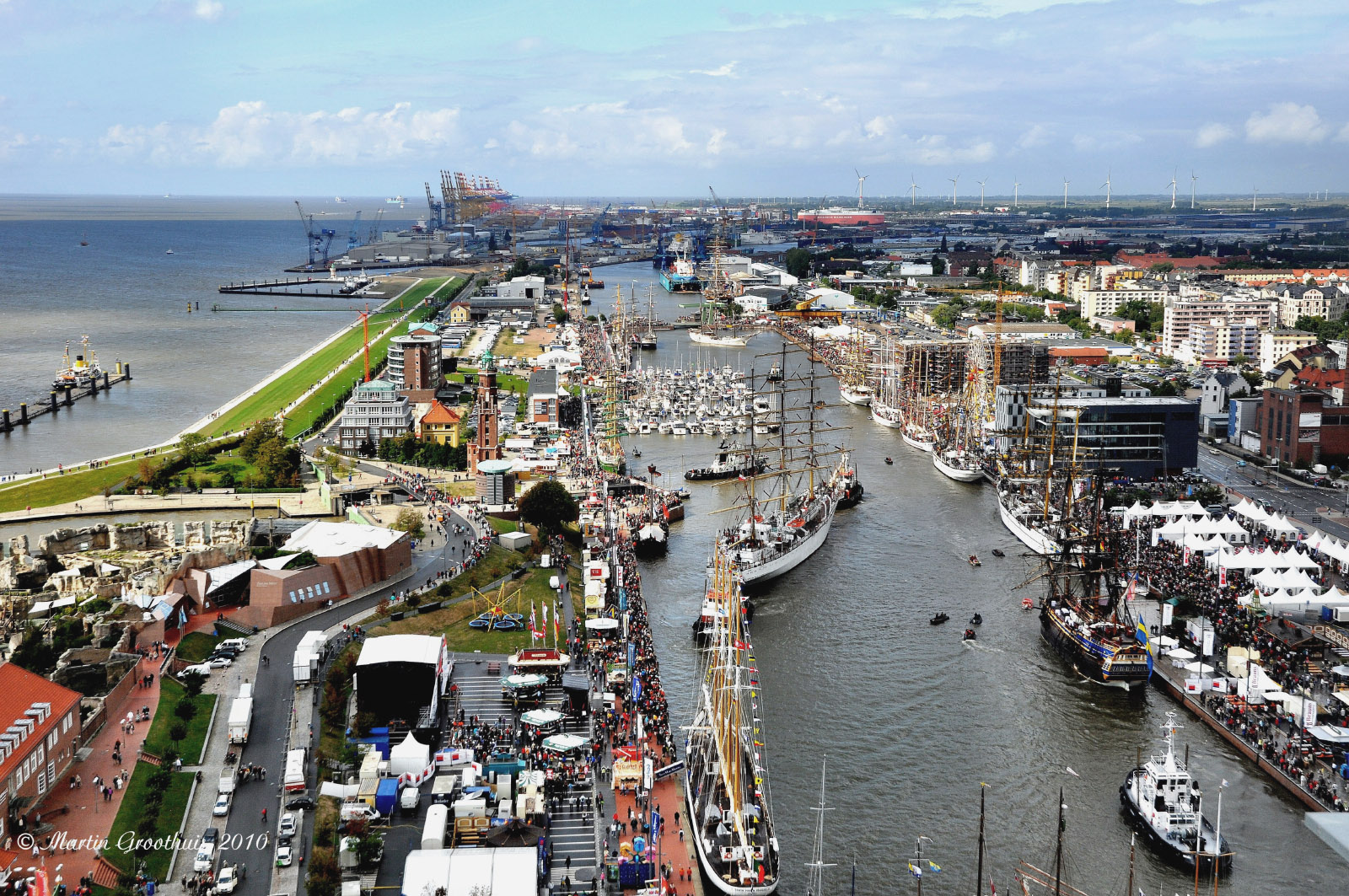
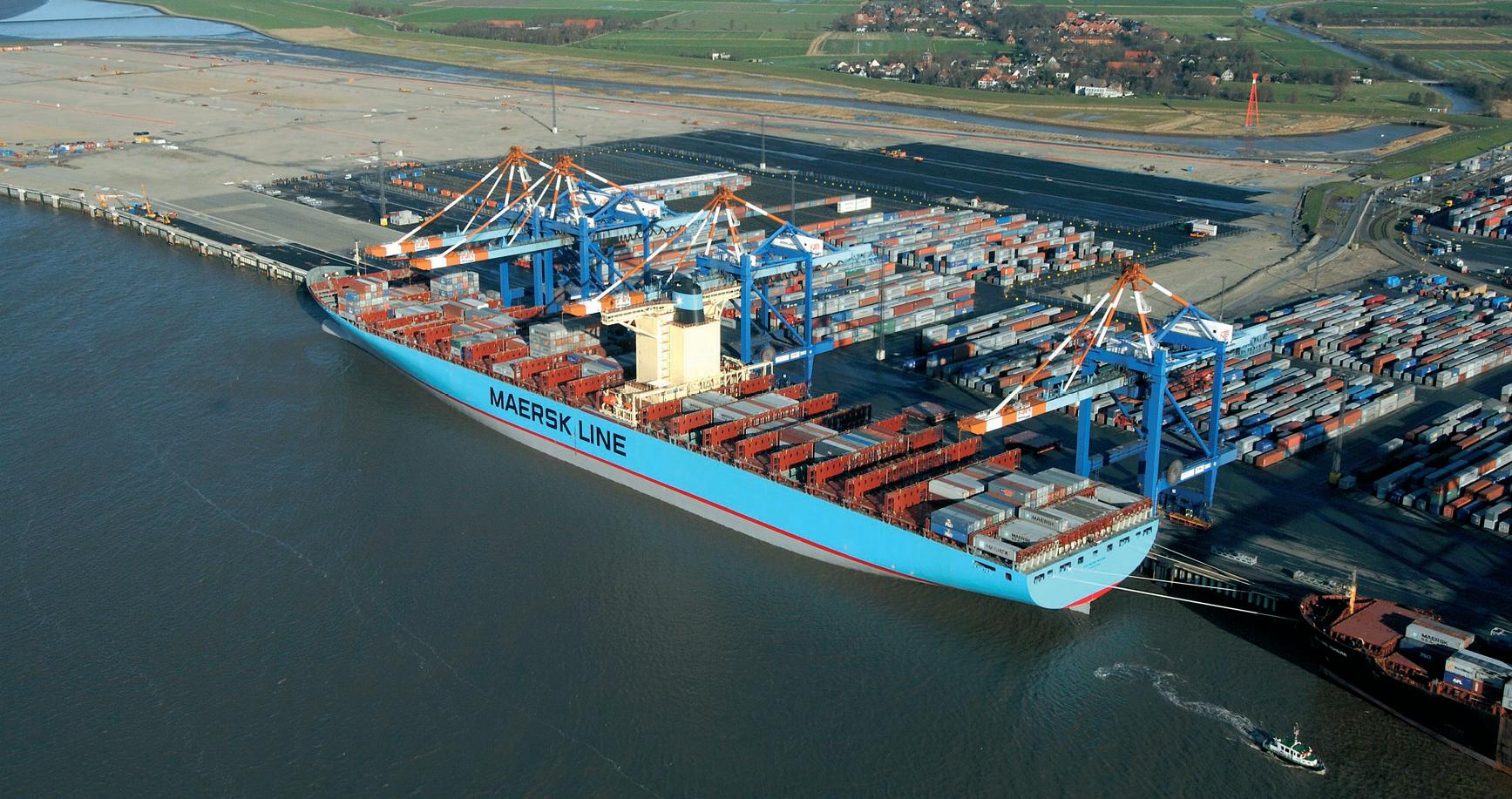

Port History
In 888 AD, Saxon King Arnuf gave the town of Bremen the right to have a market. Located at the last ford across the Weser River, there was a natural harbor where merchants settled. Merchants traveling to the Netherlands, England, and Baltic seaports signed a contract with the archbishop in 1220 to get safe passage to the North Sea.
There were settlements, like Lehe, in the area of the Port of Bremerhaven in the 12th Century. They were small villages built on islands in the estuary. In 1358, the city of Bremen joined the Hanseatic League. By 1389, the city of Bremen was the de facto capital of the lower Weser region, and one of its trading partners was the country of Norway.
In 1410, Bremen was granted the privilege to set buoys and beacons on the Weser to direct maritime traffic, signaling the beginnings of the Port of Bremerhaven. Emperor Charles V granted "stacking rights" to the city in 1541, meaning that all trade goods had to be unloaded and offered to the local merchants before they could move on. The same year, the privilege of free maritime traffic for Bremen merchants on the Weser was renewed, although they paid a Weser Tax to Oldenburg.
By 1619, the first artificial harbor on the Weser had silted up, so construction began on a new harbor at the mouth of the Aue to accommodate the increasingly larger volumes of goods traveling the Weser.
In 1653, Swedish forces captured Bremerlehe. Despite Emperor Ferdinand III's orders, Christina of Sweden did not return Bremerlehe to Bremen. The Swedes continued to hold the settlement and surrounding area, and they developed plans for a fortified town on the site that later became the Port of Bremerhaven.
The Port of Bremerhaven became a municipality in 1827 when the three towns of Bremerhaven, Lehe, and Geestemunde were combined. The City of Bremen bought 89 hectares of land at the mouth of the Weser from the Kingdom of Hanover in order to protect its share of Germany's foreign trade. The Port of Bremerhaven was founded as a shelter for the city's merchant marine, and it became Bremen's second port. The first ship to arrive at the new Port of Bremerhaven in 1930 was the American Draper. However, the port entrance on the Weser soon began to silt over again.
Construction of a new harbor, dimensioned to accommodate the steam ships that were replacing sailing ships, started in Bremerhaven began in 1847. The first American steamship, the Washington, moored outside the "Old Harbor" which was too small for the larger ships.
The Port of Bremerhaven was an important harbor for emigration in Europe. The volume of trade and emigration through the Port of Bremerhaven to North America, the new town grew fast. The Port of Bremerhaven became the base for the Navy of the German Confederation in 1848.
In 1860, the Weser railway station was completed, connecting Bremen and Hanover to the Port of Bremerhaven and making the transfer of goods into inland German possible. In 1871, the Port of Bremerhaven received a boost when the Kasierbrucke, a rail bridge across the Weser, was completed. Although the port was modern, the Weser fairway was just two meters deep, and it froze over in the winter, bringing traffic to a stop, and cutting the Port of Bremerhaven off from important North Sea trade routes.
In 1886, Bremen's chief civil engineer, Ludwig Franzius (German), proposed a novel solution to the problems of silting that confronted the Port of Bremerhaven. His proposal allowed the tides to clear the silt from the riverbed. Work began on the project in 1887, and it still ensures the flow of traffic from the Port of Bremerhaven to the North Sea. In 1888, the Europahafen was opened with a 120-meter wide, 2000-meter long harbor basin, and a depth of five meters, opening the Port of Bremerhaven to the latest modern sea-going vessels.
The first construction phase of the free port began in 1906, and additional construction in the Port of Bremerhaven continued throughout the first decade of the 20th Century. From the end of World War I until the beginning of World War II, the Port of Bremerhaven gained a new grain facility, a banana facility, the Nord Lock, and the Columbus Quay.
The Port of Bremerhaven was an important base for the Nazi's Navy, the Kriegsmarine, during World War II. As a result, much of the city was destroyed when the Allies undertook the Bombing of Bremen. However, the Allies protected important parts of the port to leave a harbor they could use to supply their forces after the war. In 1947, the Port of Bremerhaven became part of the federal state of Bremen, and it is part of today's city-state. The City of Bremen has owned the Port of Bremerhaven since 1927, although Bremerhaven is responsible for its own administration.
In 1957, the Port of Bremerhaven began to handle roll-on/roll-off cargoes. The following year, construction began on a second passenger facility. In 1966, the first container ship called at the Port of Bremerhaven, and construction for a riverside quay and container terminal began in 1968. The new quay and terminal opened for business in 1971.
The decade of the 1970s saw several new facilities in the Port of Bremerhaven that would support the growing cargo volume. These included a new container terminal with a thousand-meter riverside quay, a new roll-on/roll-off facility at Europahafen, a general cargo terminal, an Auto Terminal at Kaiserhafen, and expansion of the existing Bremerhaven container terminal.
Port of Bremerhaven growth continued in the 1980s and 1990s. The Speckenbuttel foreign trade center was opened in 1981. The grain facility was expanded and modernized. In 1983, an extension was added to the container terminal that made it the largest closed container-handling facility on the continent. A new banana facility opened at Verbindungshafen in 1984, and a new cold storage facility was added to the container terminal in 1986.
In 1994, construction began on a third container terminal with two berths for large container ships and a 700-meter long quay. The facility was inaugurated in 1997. In 1998, a new industrial park was created near the Port of Bremerhaven. In 1999, the federal government deepened the Weser River, opening the navigation channel for the largest class of container vessels to the Wilhelm Kaisen container terminal in the Port of Bremerhaven.
Thus far, the Port of Bremerhaven has seen many changes in the 21st Century. The free port status of the Port of Bremerhaven became obsolete and was revoked in 2000. In 2002, the deep-water container port in Wilhelmshaven, to be named JadeWeserPort (German), was approved by the state governments of Lower Saxony and Bremen, and work started on the new port in 2003.
The new Columbus Cruise Center Bremerhaven was opened in 2003, and the Columbus Railway Station was upgraded to make the new center a world-class facility for German ocean-borne tourism. Also in 2003, the third container terminal was opened, bringing the total riverside quay length to 3.2 thousand meters.
In 2004, the first pile was driven for the fourth container terminal to accommodate the world's biggest container ships. This effort is the most ambitious construction project ever undertaken by the Port of Bremerhaven, and it represents the biggest investment project on Germany's coast.
In 2005, construction began on the Osthafen expansions to provide urgently-needed space for handling of automobiles in the Port of Bremerhaven. The new facilities occupy an area of 6.1 hectares and have three berths for deep-sea carriers up to 270 meters long.
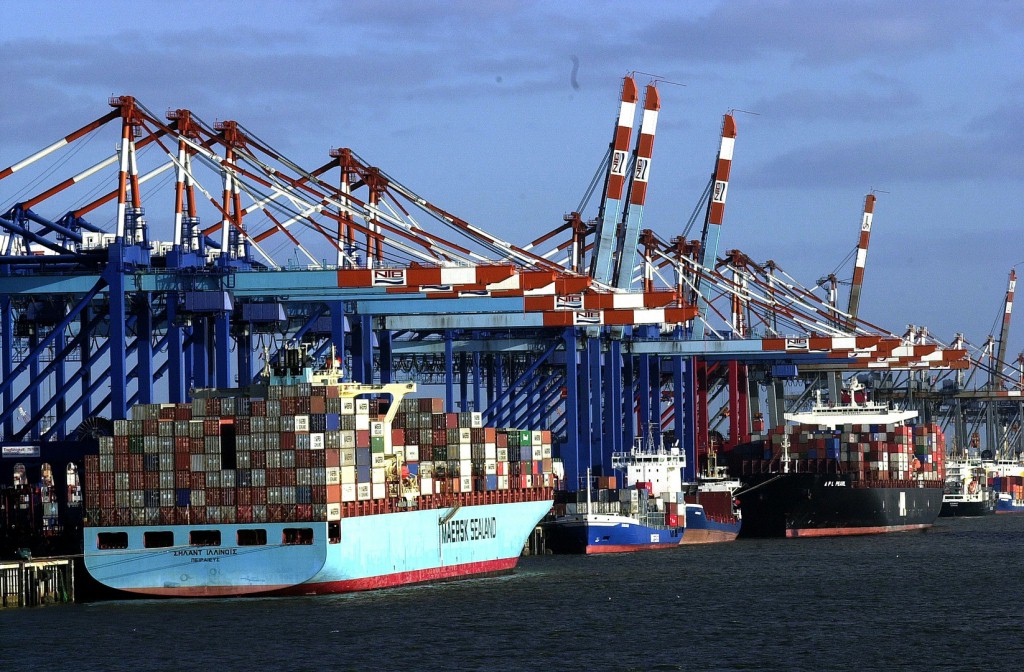
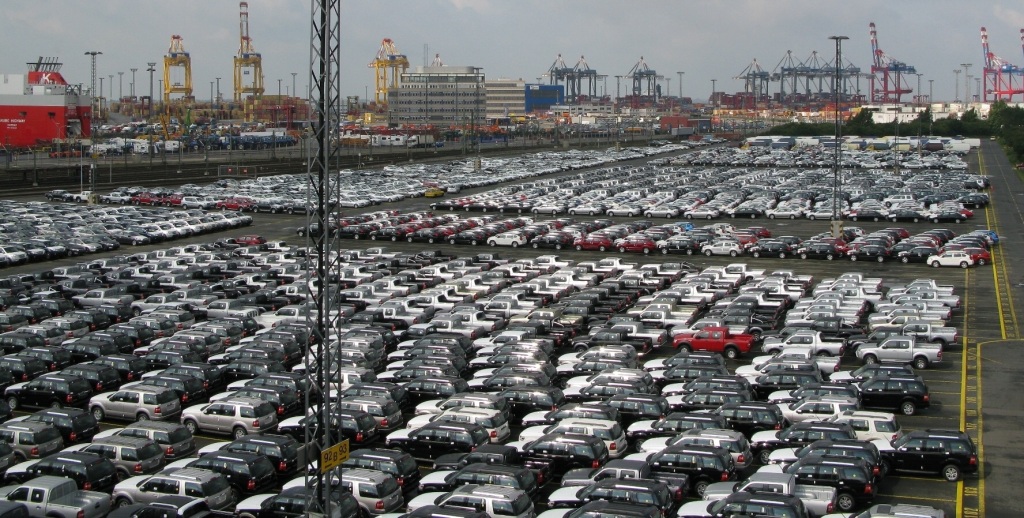
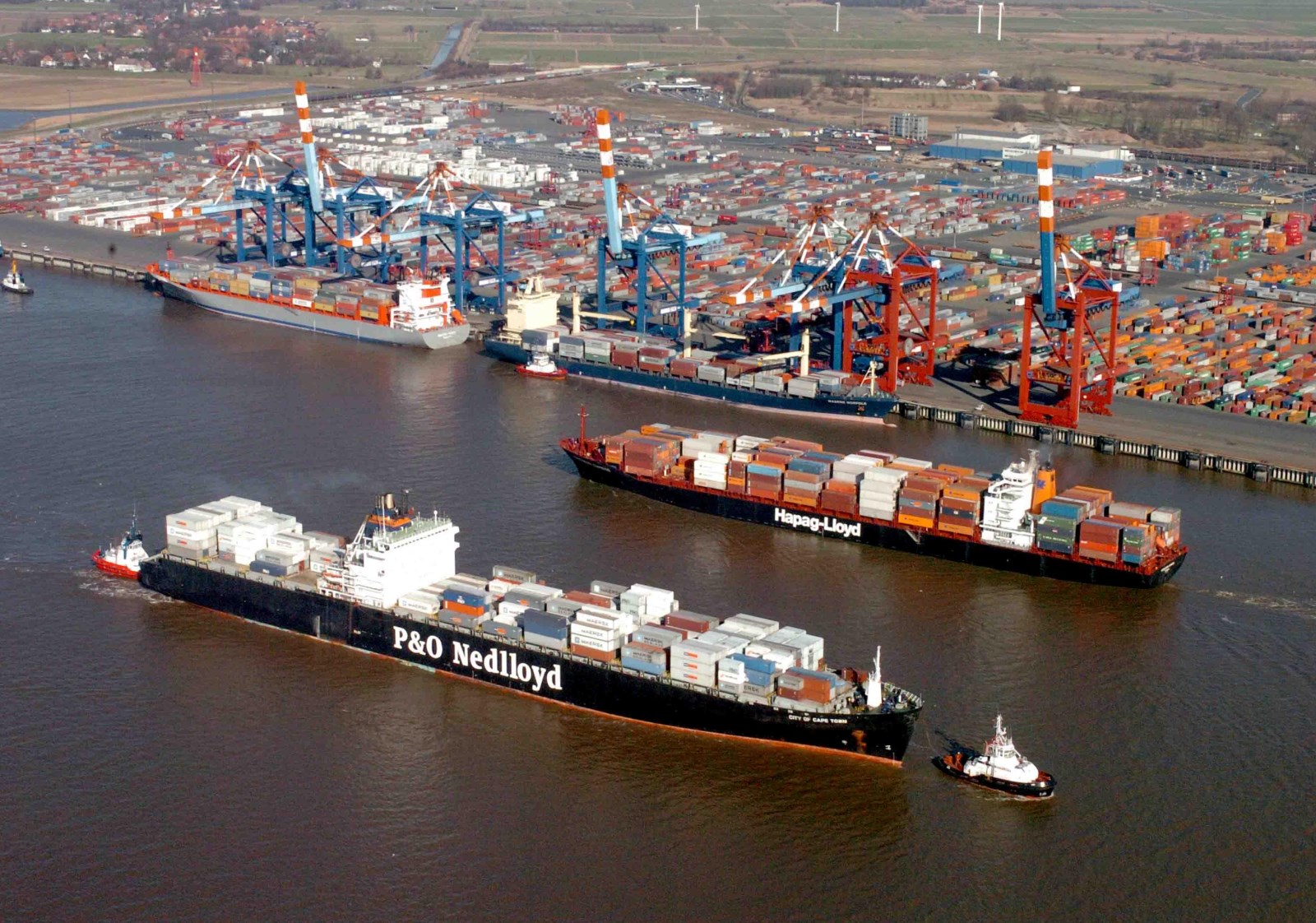

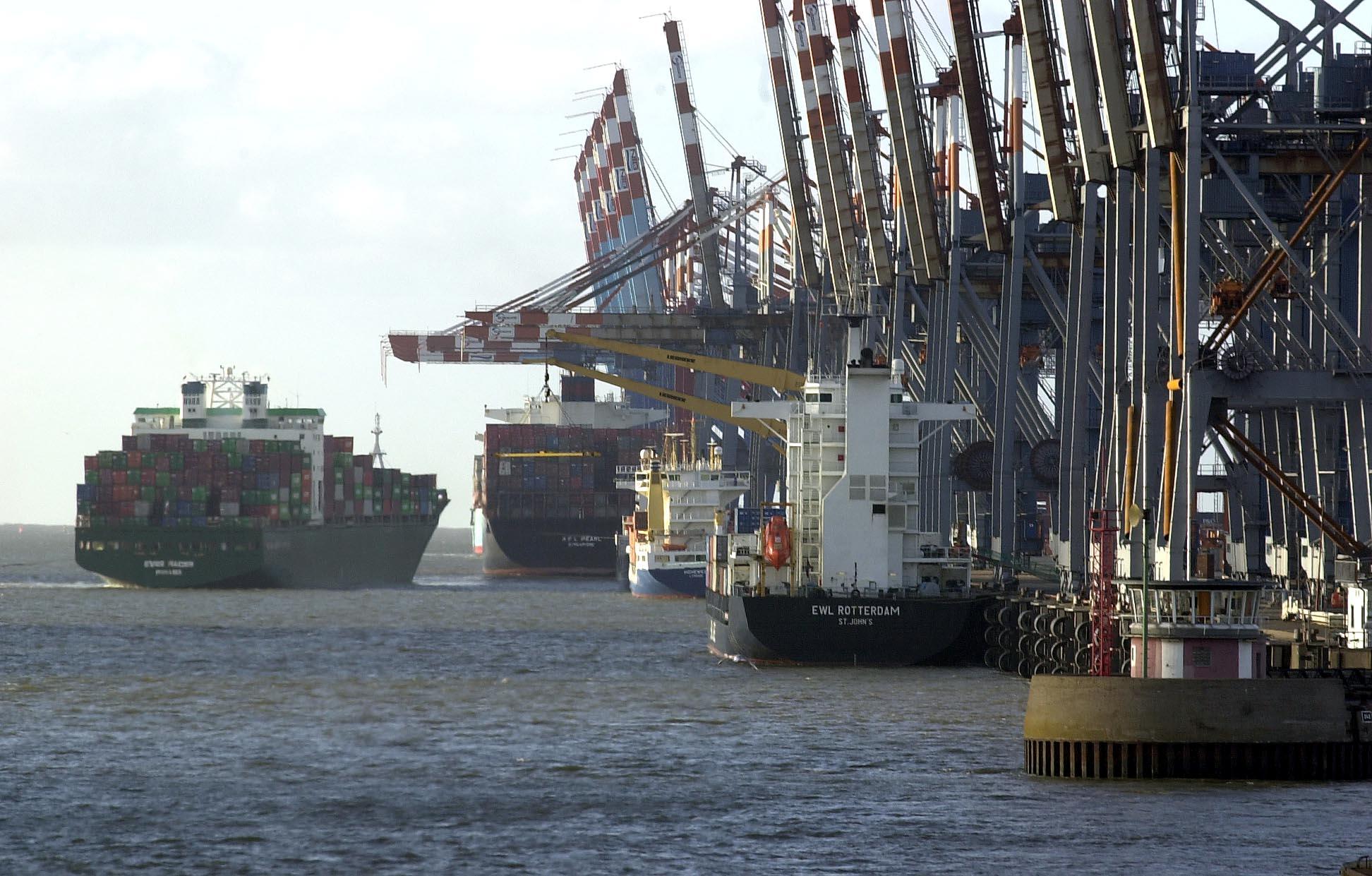

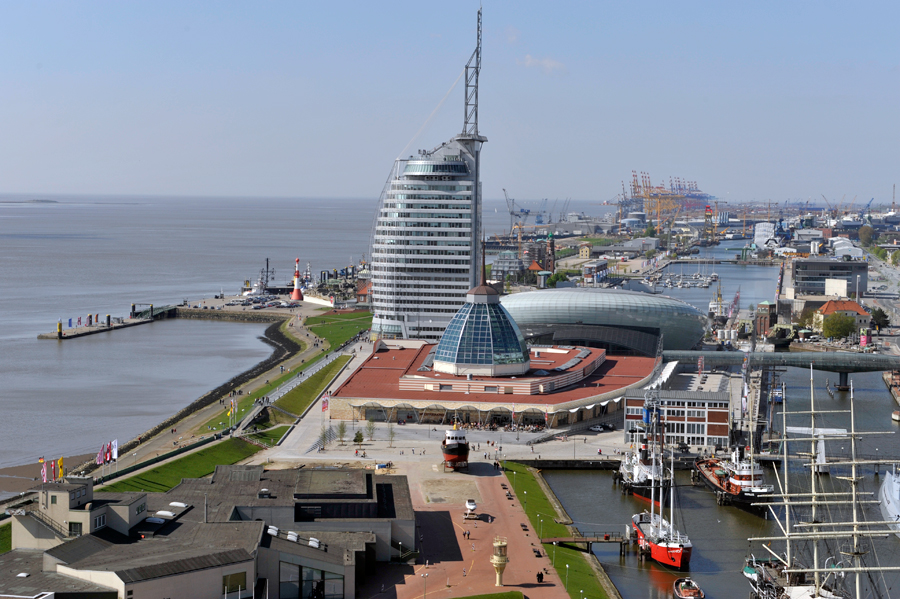
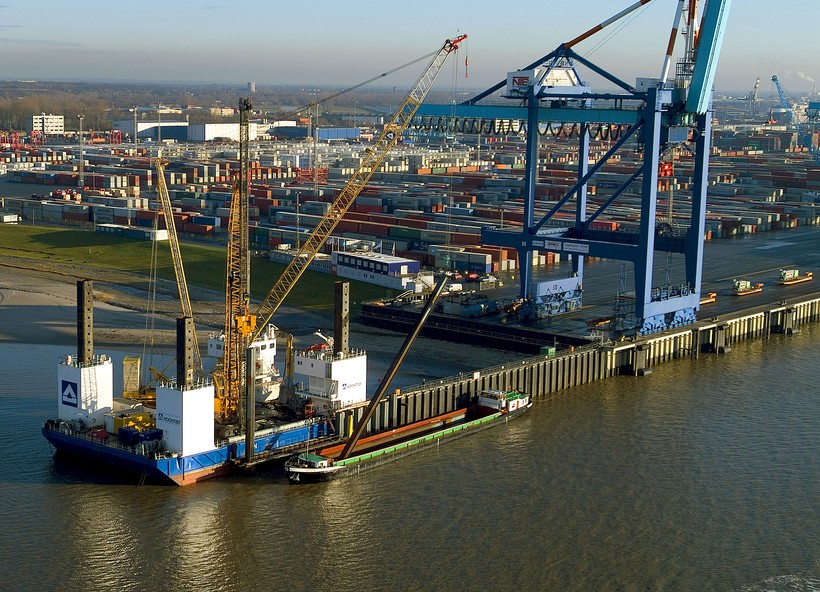
Port Commerce
Bremenports (German) has managed the Bremen/Bremerhaven Port Group on behalf of the City of Bremen since 2002. Bremenports is responsible for operation and maintenance of Port of Bremerhaven infrastructure that includes 33.9 kilometers of quays, 186 kilometers of port rail tracks, 56 bridges, 5 locks, and over 9 kilometers of docks. Bremenports also manages port lands, including customer services, previously managed by the Bremen Port Authority. Finally, Bremenports markets the Port of Bremerhaven under the brand "Bremenports Bremen/Bremerhaven."
Together, the Ports of Bremen and Bremerhaven offer comprehensive cargo-handling and logistics services hard to match elsewhere in Europe. Most of the port facilities serving the City of Bremen are located in the Port of Bremerhaven. The Port of Bremerhaven offers the world's biggest closed turnover area for containers.
In 2008, the Port of Bremerhaven handled a total of 74.5 million tons of cargo, including almost 65 million tons of general cargo and 9.5 million tons of bulk cargo. Of this total, 38.8 million tons were imports, and 35.7 million tons were exports. The Port of Bremerhaven handled almost 54.7 million tons of containerized cargo in more than 5.4 million TEUs. The Port of Bremerhaven also handled almost 2.1 million vehicles in 2008, including over 1.2 million exports and almost 800.8 thousand imports.
The Port of Bremerhaven specializes in handling containers and automobiles. The Port of Bremerhaven has capacity to handle almost 5.5 million TEUs and 55 million tons of containerized cargo per year. The Port of Bremerhaven boasts the fourth-largest container terminal in Europe and a five-kilometer long container quay with 14 berths that can accommodate mega-container vessels. With an operating area of about 90 hectares, the new container terminal 4 has 3.2 thousand meters of quay with capacity to handle over seven million TEUs.
The Port of Bremerhaven has capacity annual for over two million units of automobiles, and it offers storage space for 120 thousand cars, including covered area for 45 thousand cars. The Port of Bremerhaven includes 15 berths dedicated to car carriers.
The Port of Bremerhaven invested over 20 million Euros to convert the 40-year-old Columbus Railway Station into the new modern Columbus Cruise Center Bremerhaven. The new terminal treats arriving passengers to shops, restaurants, and great views of the ships traveling the Outer Weser River. In 2002, only 53 cruise ships carrying about 50 thousand passengers called at the Port of Bremerhaven. In 2008, the Port of Bremerhaven served more than 127 thousand passenger trips and 91 cruise vessels.
Cruising and Travel
Due to World War II, the City of Bremerhaven (German) has few historic buildings. Nevertheless, the Port of Bremerhaven offers a wonderful maritime environment where visitors can enjoy several sea-related attractions and activities. Maritime attractions include wonderful trips on the River Weser and through the harbor, several museums, and some of the most beautiful countryside around.
The Port of Bremerhaven has a cool temperate climate influenced by the North Sea. Winters are mild, and summers are warm but not hot. Rainfall is common, but it usually falls as drizzle or light rain, particularly from October through March. Temperatures range from an average high of 22 °C (71 °F) in July and August to an average low of 0.2 °C (32 °F) in February.
Visitors to the Port of Bremerhaven will enjoy a trip to the Shifffartsmuseum (Museum of Sea Travel) where they can explore several ships, including a submarine. The museum tells the story of Germany's military and merchant navies and contains exhibits covering medieval shipping, shipping in the early modern and industrial ages, fishing and whaling, sailing and boating, pilotage and navigation as well as the science of tides, oceanography, and polar research.
The Deutsches Auswandererhaus (German Emigration Center) is dedicated to the history of German emigration, particularly to the United States. Over seven million people left Germany through the Port of Bremerhaven between 1830 and 1974, traveling overseas to seek a better life. Located in the Old Harbor, the Auswandererhaus is the biggest museum in Europe dedicated to the subject. Visitors get first-hand knowledge of the emigrants' experience by traveling through the different stages of the process accompanied by selected biographies and personal stories. The Forum Migration deals with global migration and gives visitors the opportunity to search for their own emigrated ancestors. The museum contains a Kids' World and a restaurant that offers dishes from both the Old and New World.
An entertaining day-trip to Helgoland (German) is a highlight for any trip to the Port of Bremerhaven. Helgoland is a small German island where cars are nearly non-existent. In addition to being the home of one of Europe's biggest gannet-breeding areas, the island offers several natural wonders, a museum, an aquarium, and remains of Nazi bunkers that the British tried to blow up during World War II.
Travelers who want to visit the Port of Bremerhaven by sea can find a list of scheduled cruises on the Cruise Compete website.
http://www.worldportsource.com/ports/DEU_Port_of_Bremerhaven_2764.php
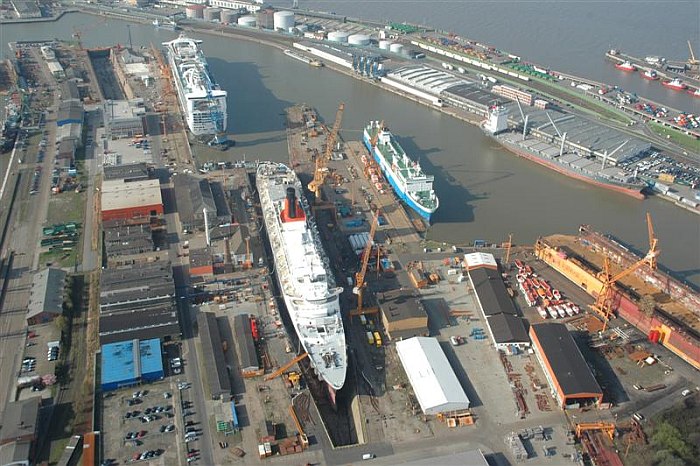
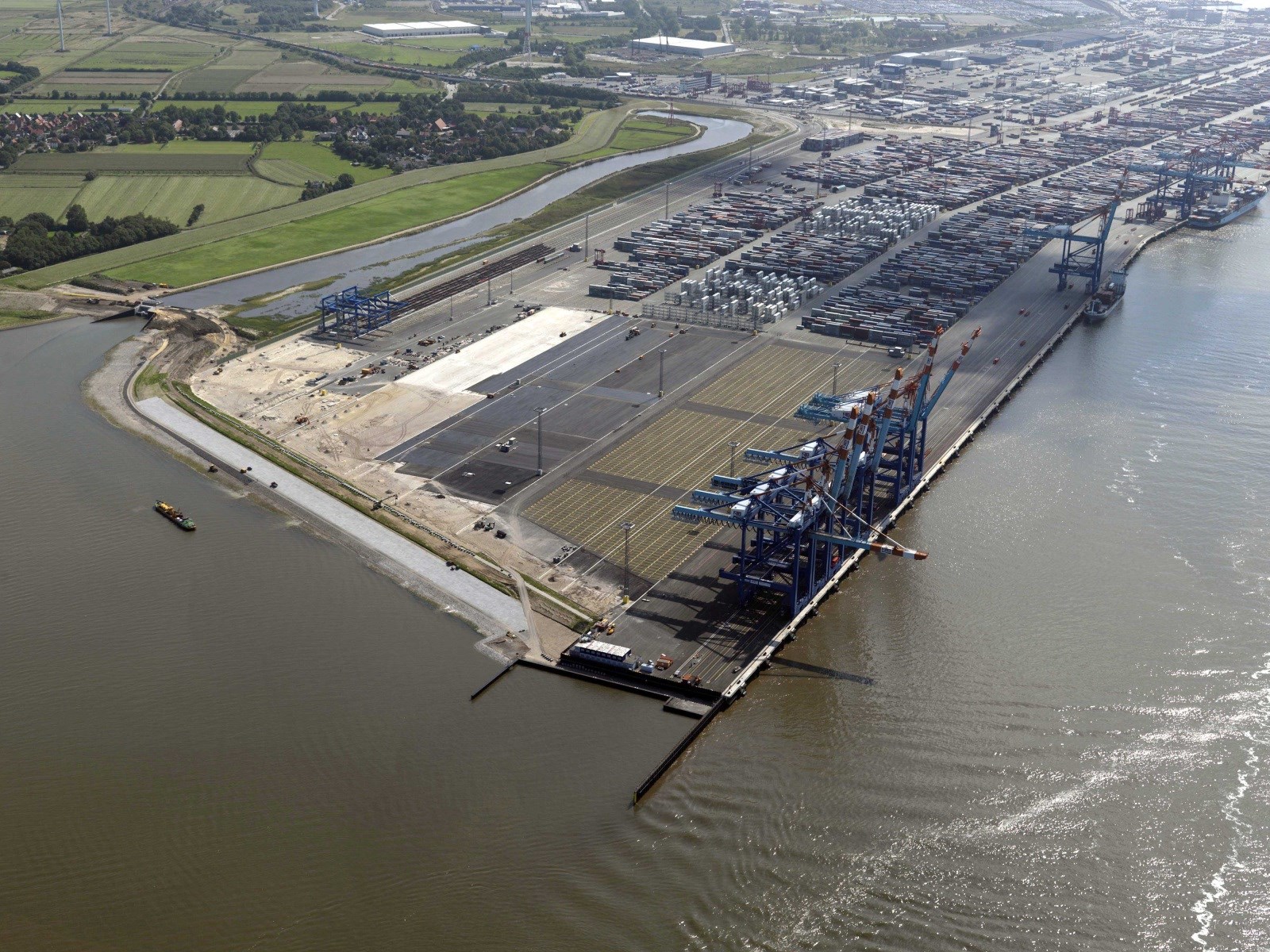

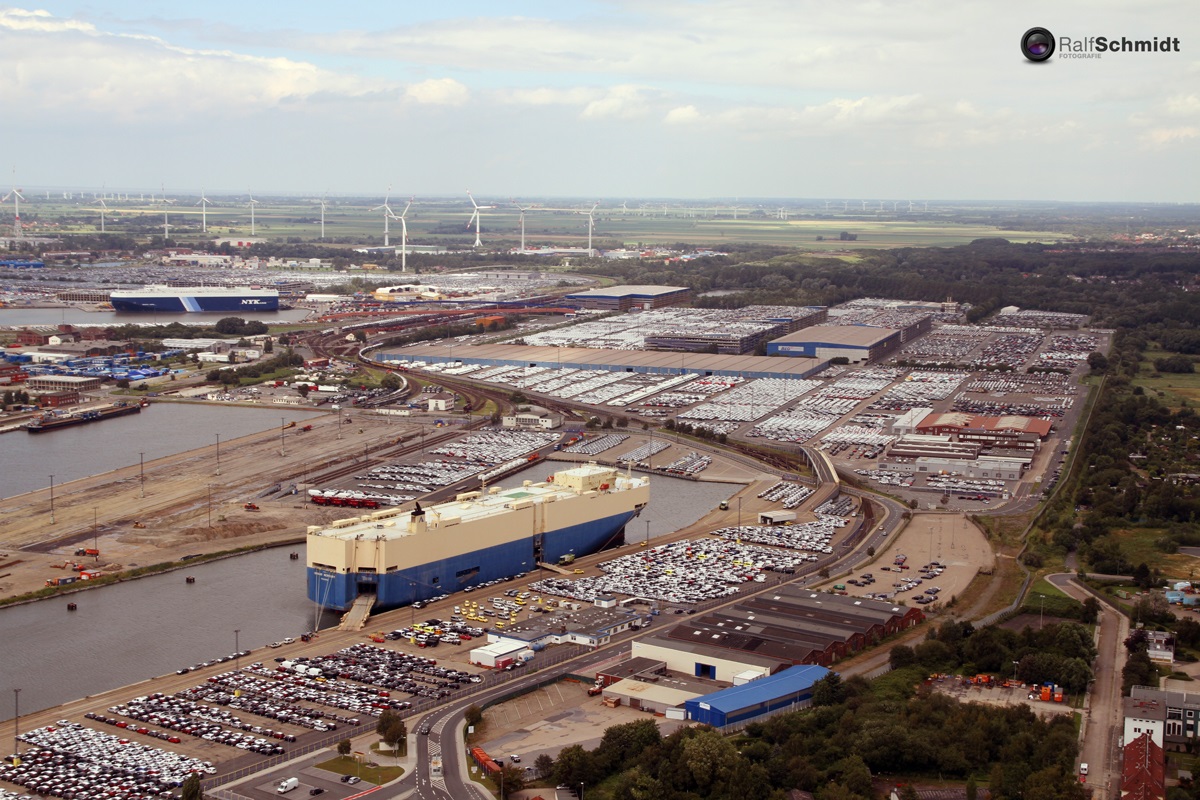
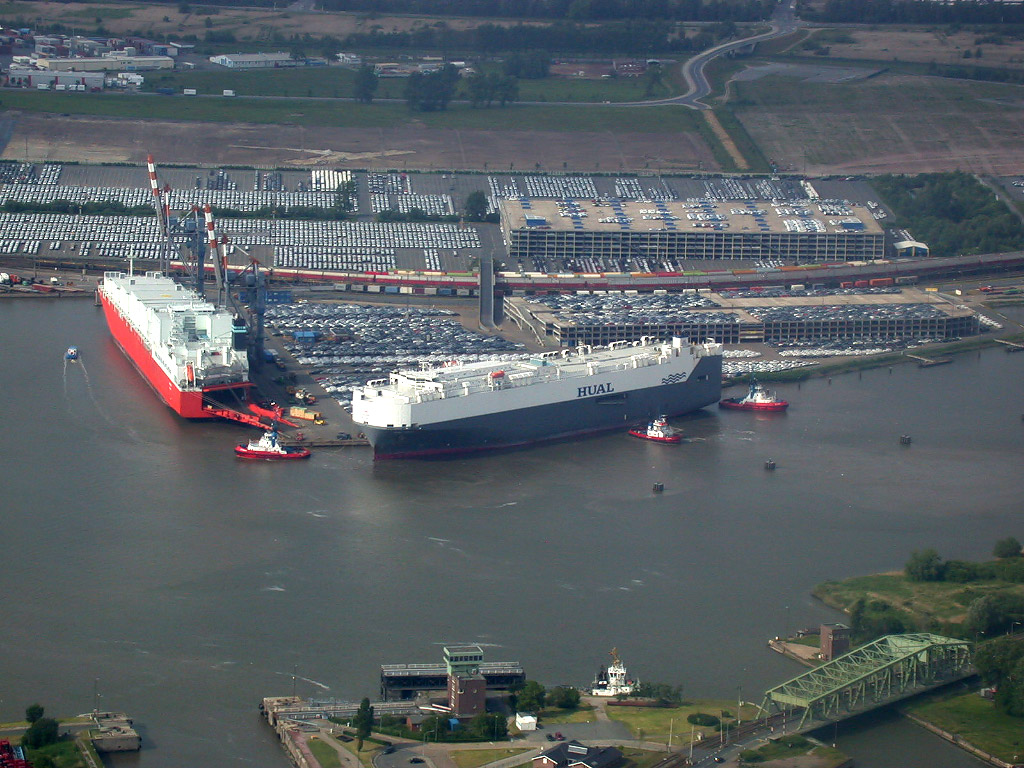
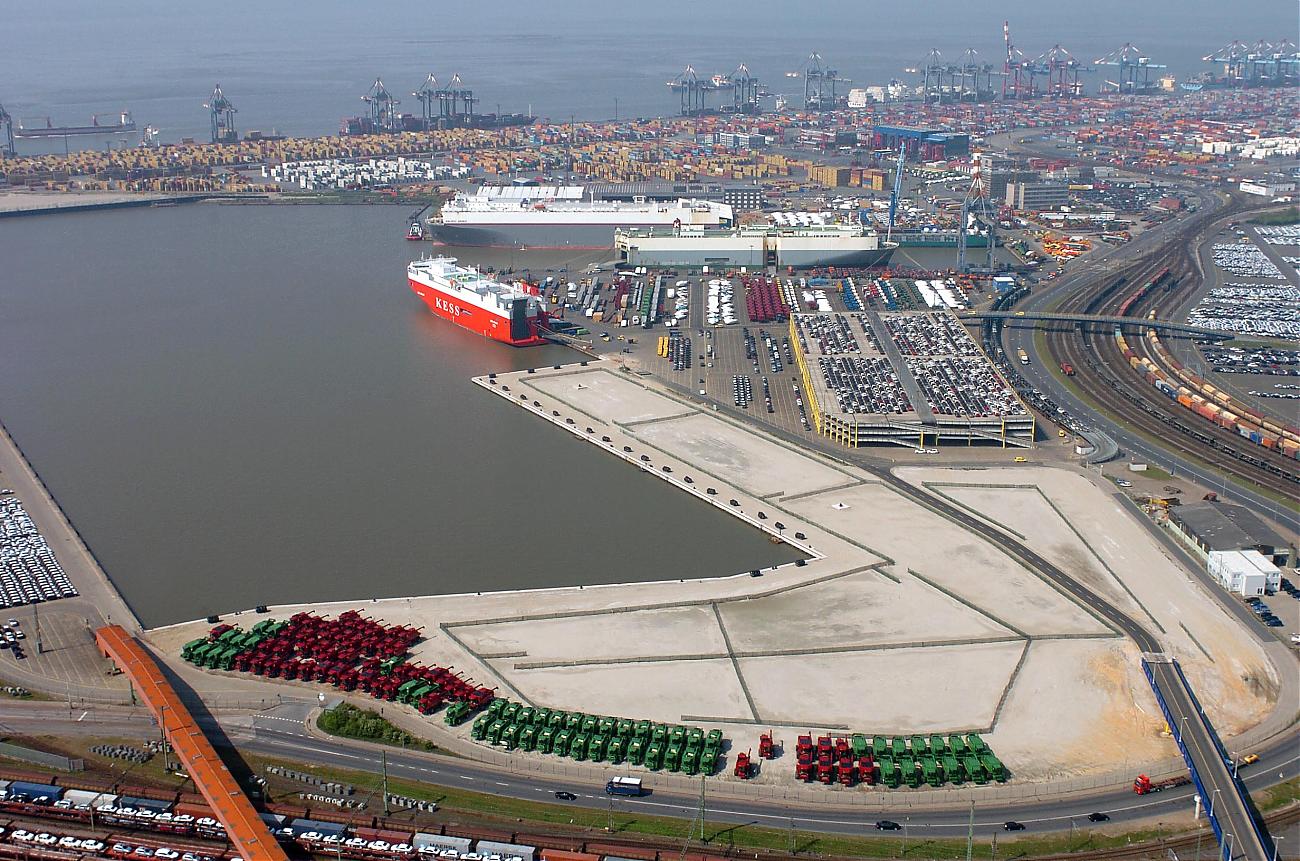
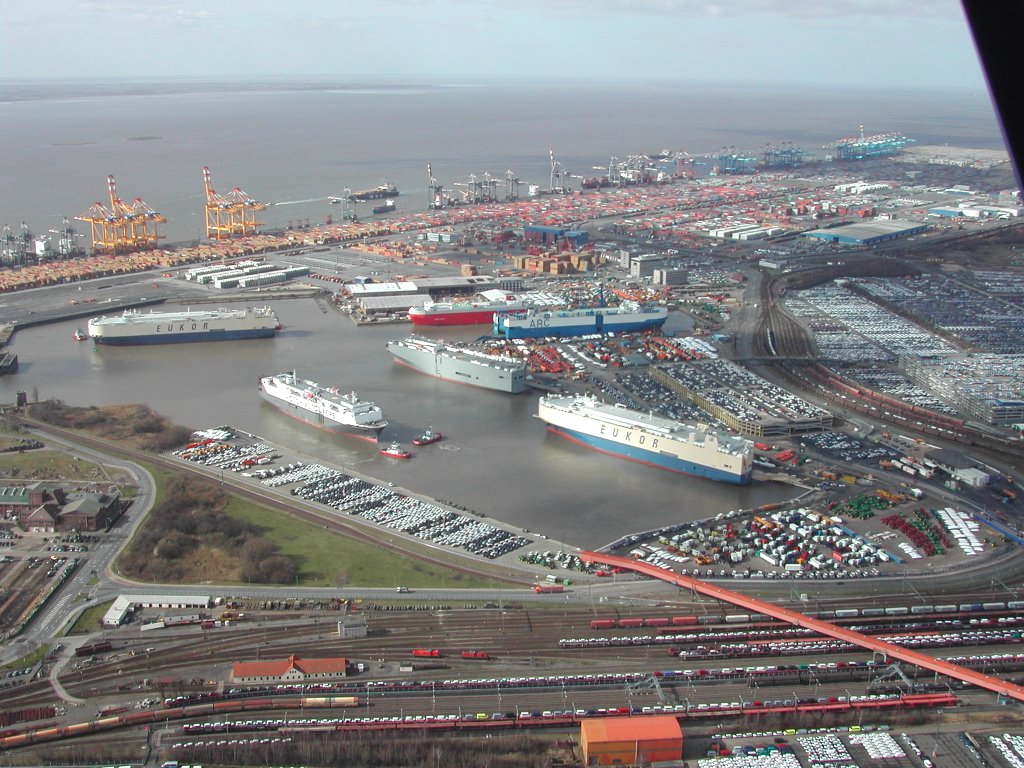
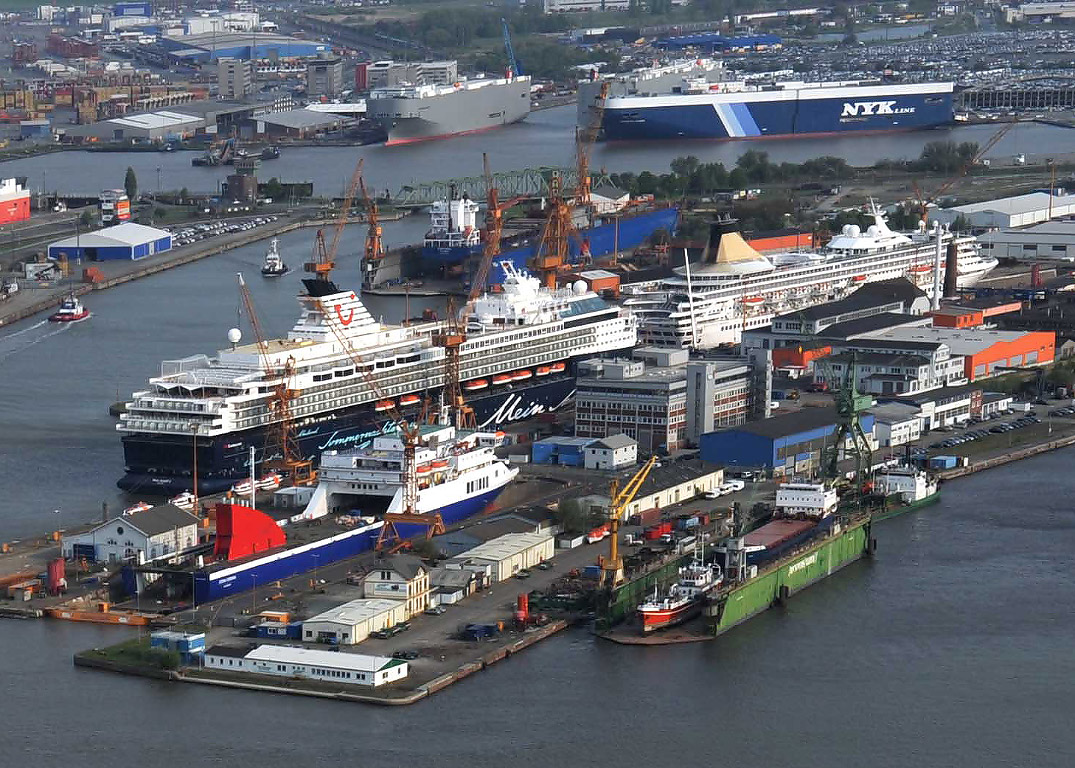
Future-proof
01 May 2007
Perfect fit: Bremerhaven's new CT 4 welcomes the Eleonora Maersk
Bremen/Bremerhaven secures feedership role for the future as JadeWeserPort project gets go-ahead. Tom Todd reports
"We have no cause to hide ourselves behind Hamburg's skirts", declares Weser Ports and Economics Senator Jörg Kastendiek tipping further double-digit growth this year for Bremen/Bremerhaven.
It's a friendly comment on the traditional rivalry between Germany's two biggest seaports, much less acute now than it was, but it reflects nonetheless the fact that the two ports continue to pursue quite different strategic paths.
The Weser strategy has been the opposite of Hamburg. As its terminals reach capacity limits, it is looking outward rather than inward, to JadeWeserPort (JWP) and to a significant feeder role in the shadow of the future mega hub.
That preparation is why Mr Kastendiek says that Bremen/Bremerhaven, Germany's second biggest port complex and Europe's sixth biggest universal port, is "racing at breathtaking speed from one record to another".
In what he described as a "sensational" 2006, Bremen/Bremerhaven posted 65m tonnes of cargo and 4.6m teu, both around 20% higher than in 2005. It also handled 1.9m vehicles and, with car sector expansion underway, looks set to regain its European lead from Zeebrugge before too long.
Bremen is spending ¢800m ($1.07bn) on maritime infrastructure this decade to keep pace with growth and develop all available space prior to becoming half of the Jade Weser concept in partnership with Lower Saxony.
The final ¢500m ($671m) container terminal expansion - CT 4 - will be completed next year by which time four new berths will be ready. "The market is waiting urgently for CT 4.We cannot afford any delays", says Mr Kastendiek.
When complete, CT 4 will increase Bremerhaven quayside length to nearly 5km, for 14 ships, and boost handling to around 7m teu a year, twice the figure of just eight years ago.
The ships being handled are already the biggest afloat, following the creation last autumn of a 600 metre turning basin, rushed through to host the 11,500 teu Emma Maersk.
Elsewhere, other strategic projects are soaking up millions,among them the expansion of the Osthafen car handling hub and the ¢233m ($313m) rebuilding of the Kaiserschleuse to allow bigger car carriers into the port.
All of this is now strategically linked with the JWP, just around the coastal corner on the Jade River, where approval has now been granted by regional authorities for construction up to 2010 at a cost of nearly ¢1bn ($1.34bn). Lower Saxony Economics Minister Walter Hirche says construction is likely to start this summer and JWP managing director Helmut Werner tells Port Strategy that means by August/September.
Supporters of the JWP say it will be the right port at the right time and it's difficult to fault that view, given current north European port developments.
The Wilhelmshaven terminal will be the only German deep-water facility offering tide-independent handling of fully-laden mega boxships. It will have four berths for ships of up to 430m drawing 16.5m and carrying about 12,000 teu apiece. Capacity is put at up to 2.9m teu a year.
But a cautious Mr Werner notes that appeals could still hold up the construction."We don't know whether there will be objections or from whom they might come", he tells PS.
http://www.portstrategy.com/features101/area-survey/europe/germany-and-poland/future-proof
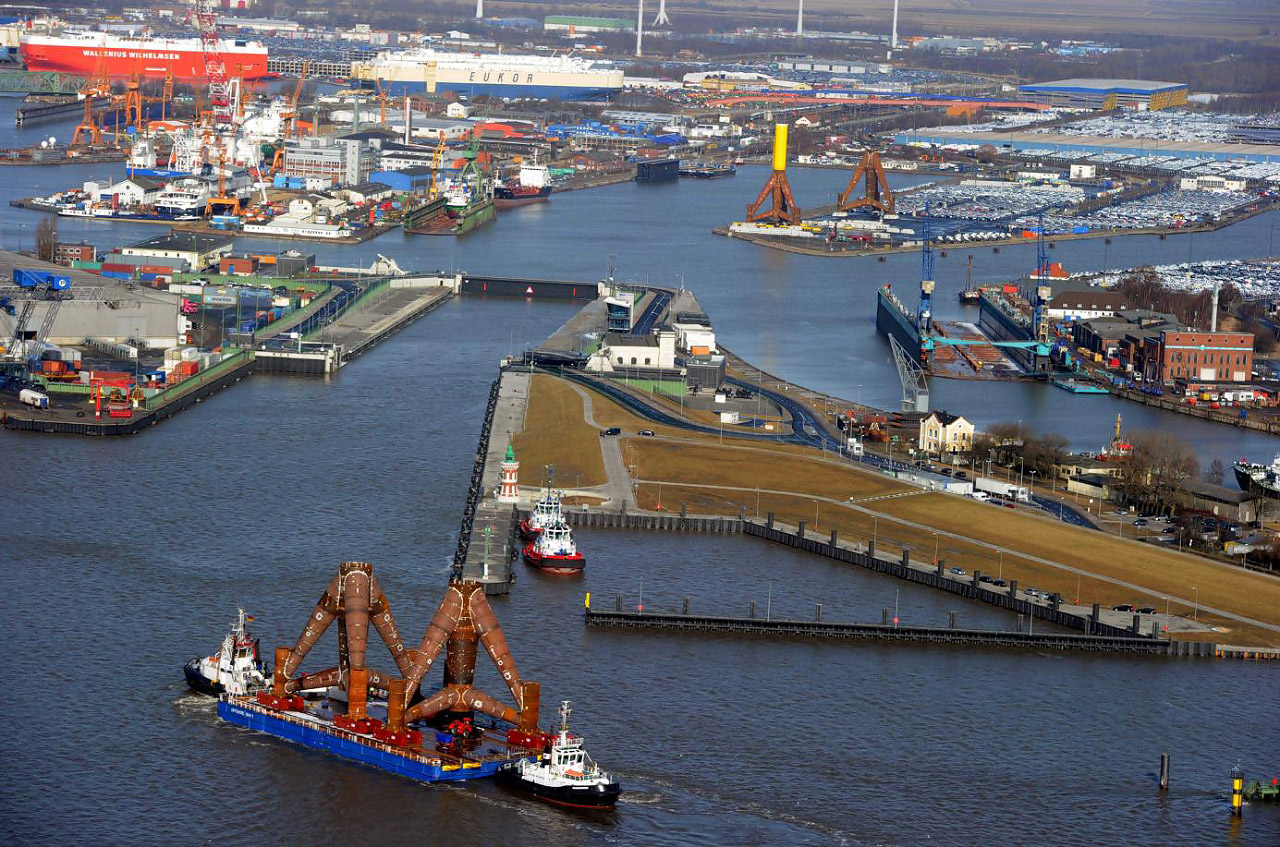
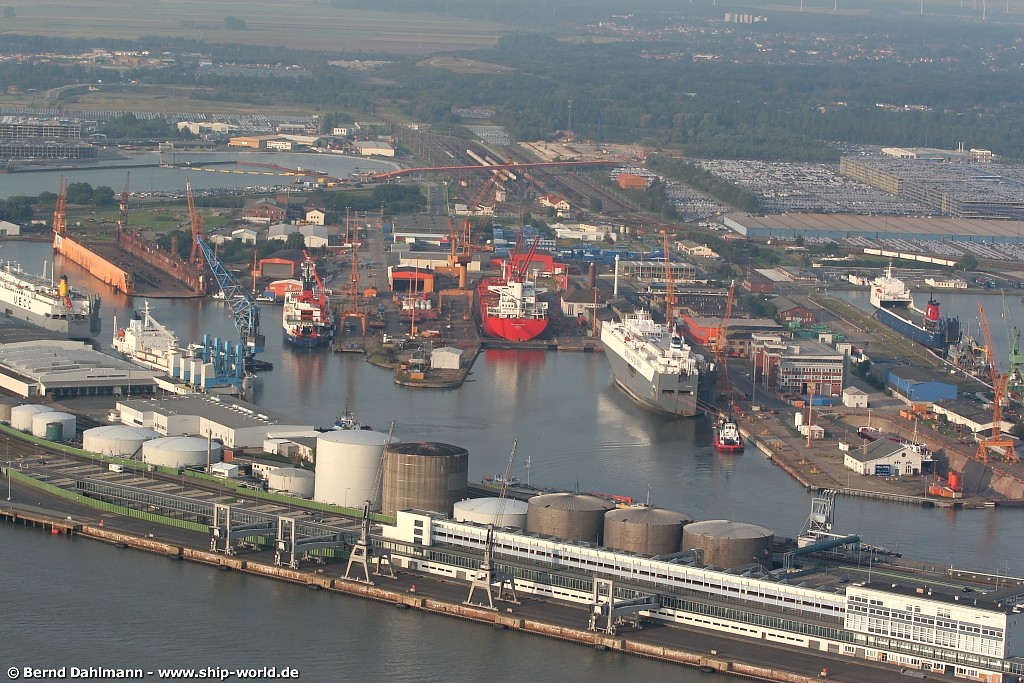
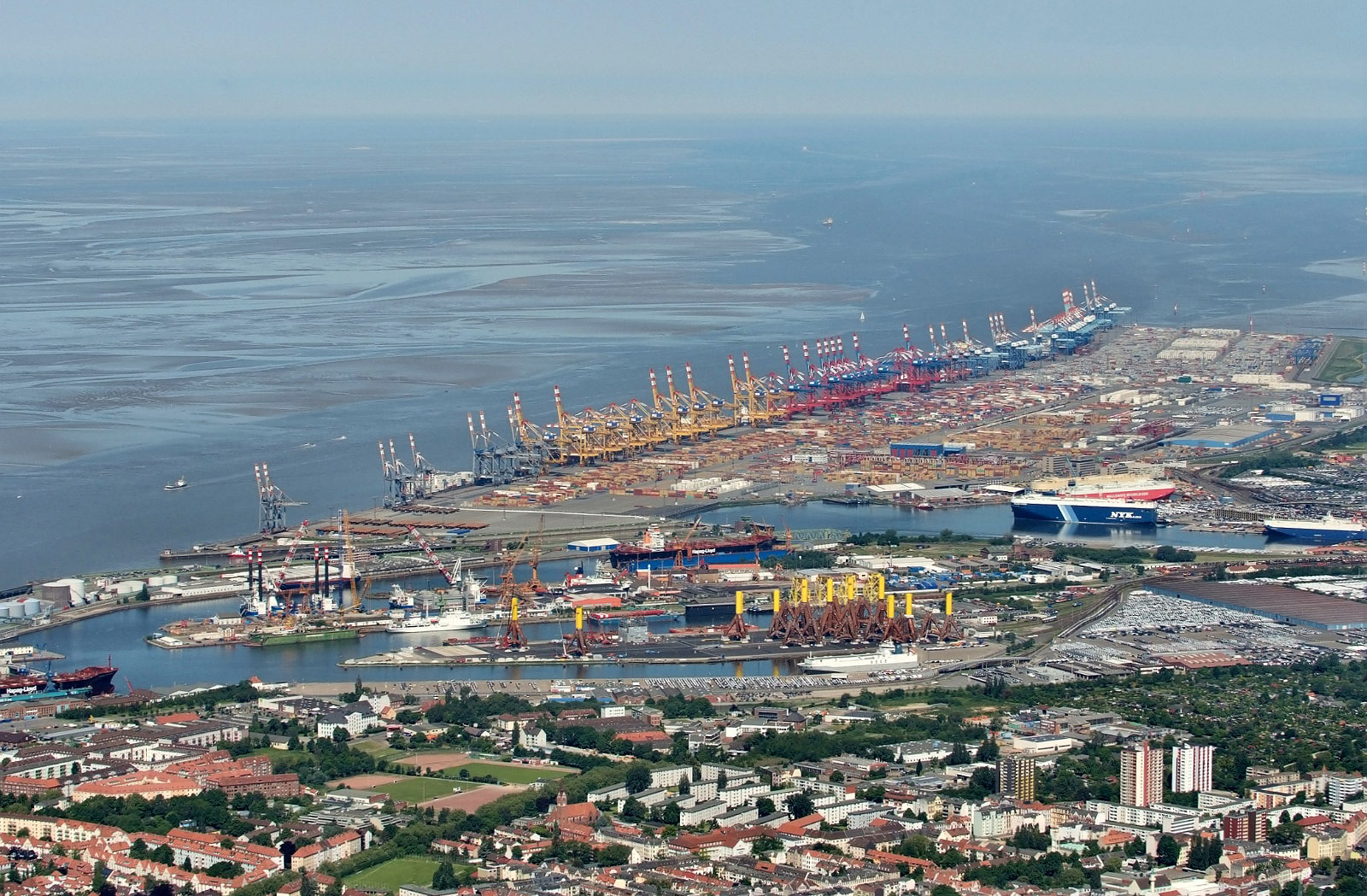
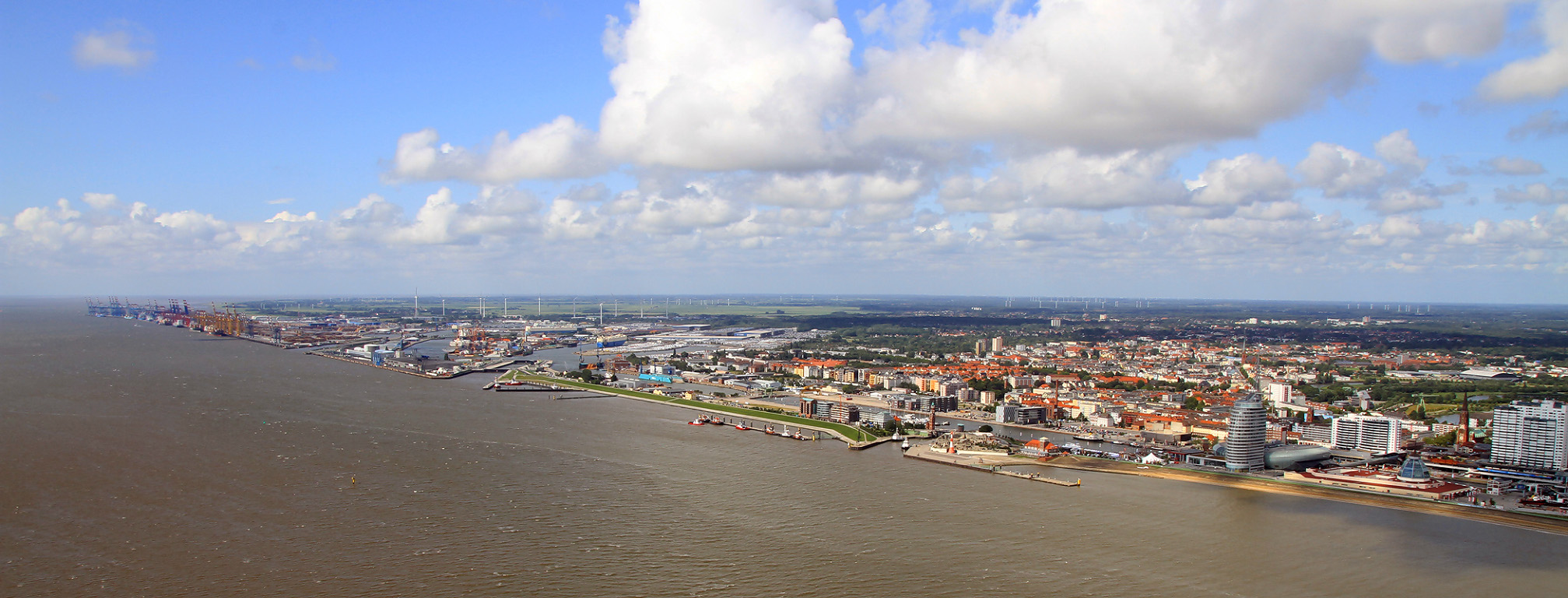
Bremen y Bremerhaven: dos ciudades – un Estado
Las ciudades hermanas Bremen y Bremerhaven impresionan a sus visitantes con inusuales miradas introspectivas hacia mundos fascinantes, con unas vistas exteriores sobre monumentos marítimos e históricos fuera de lo común y con mucha visión para el arte y la cultura.
1200 años de tradición y cosmopolitanismo impregnan a Bremen, la ciudad hanseática junto al Weser. Como monumentos emblemáticos inconfundibles se han conservado el hermoso Ayuntamiento, en el estilo del Renacimiento de Weser, y la honorable figura de Rolando (Patrimonio de la Humanidad por la UNESCO) en la histórica Plaza del Mercado. Por supuesto, también allí se encuentran los mundialmente famosos músicos de Bremen, extraídos del cuento de los hermanos Grimm.
Excitantes mundos de aventura y centros de ciencias, miradas introspectivas hacia tecnologías futuristas – A través de numerosos proyectos, Bremen demuestra que la ciencia no tiene por qué ser aburrida. Los mundos del conocimiento del centro «Universum» de Bremen, del Jardín Botánico y del Museo de Ultramar colocan el conocimientos al alcance de la mano. En el EADS Astrium, los visitantes podrán descubrir cómo los astronautas comen, duermen o se duchan en el espacio.
La fiesta popular más antigua de Alemania, el «Freimarkt», el Festival de Música, los acontecimientos musicales y teatrales, unas exposiciones artísticas de gran relevancia, el tradicional Mercado de Navidad, con el espectáculo histórico «Schlachte-Zauber» que llena de magia el paseo del Weser... ¡En Bremen se esconde mucha energía y vivencias especiales!
© Bremer Touristik-Zentrale
Bremerhaven, ciudad marítima
Donde el Weser desemboca hacia el Mar del Norte se halla la ciudad más grande de la costa septentrional alemana, Bremerhaven. El distrito de Havenwelten, en Bremerhaven, fascina a los que lo visitan con emocionales puestas en escena y una interesantísima transmisión de conocimientos: en la Deutsches Auswandererhaus® (Casa Alemana del Emigrante) cobra vida la época de la emigración; en la Klimahaus® Bremerhaven 8° Ost (Casa del clima Bremerhaven 8º Este) se puede viajar a través de las zonas climáticas del planeta. En el Museo Alemán de Navegación se expone la coca náutica más antigua del mundo, y en el Zoo am Mer, parque zoológico junto al mar, campan a sus anchas los osos polares, pingüinos y demás animales de los Polos. Gigantes del océano ponen rumbo hacia la ciudad marítima, barcos-museo se exhiben en el puerto, y la ruta del HafenBus (autobús por el puerto) permite a los visitantes echar un vistazo a los transbordadores de coches y de contenedores que parten hacia los puertos de ultramar. El Museo de Historia de Bremerhaven nos transporta a mundos pasados del trabajo y formas de vida de nuestras costas, y en el escaparate del puerto pesquero puede sentirse en primera persona el mundo de la pesca: ya sea en el mundo marino Atlanticum, con el acuario de agua marina, en el barco de arrastre «Gera», en el «Seefischkochstudio» (escuela de cocina de pesca marítima) o en el restaurante.
http://www.germany.travel/es/centro-de-viajes/estados-federados/bundeslaender_1/bremen/bremen.html
Bremerhaven es una de las dos ciudades que forman el Estado de Bremen en Alemania y su nombre significa "puerto de Bremen".
Esta ciudad al borde del río Weser es la más grande de Alemania sobre el mar del Norte y el puerto pesquero más importante de Europa, con astilleros dedicados a la construcción de barcos. El puerto de Bremerhaven es también uno de los puertos de exportación de automóviles más importante de Europa.
En 1827 se fundó con calles rectas y paralelas, sus esquinas son perfectos ángulos rectos y fue planeada como "Puerto de entrada" para grandes barcos. Para millones de emigrantes alemanes del siglo XIX, Bremerhaven se convirtió en "la última ciudad antes de Nueva York".
Los bombardeos destruyeron la ciudad durante la Segunda Guerra Mundial.
Cerca de 10.000 habitantes entre soldados de ocupación estadounidenses y sus familiares se retiraron de esta ciudad a principios de los años ochenta, por ello la vida es ahora relativamente barata.
En la actualidad, Bremerhaven es cada cinco años sede de uno de los festivales internacionales de veleros (Sail Bremerhaven) más importantes del mundo.
Tiene 120.000 habitantes aproximadamente.
http://es.wikipedia.org/wiki/Bremerhaven
http://en.wikipedia.org/wiki/Bremerhaven
http://de.wikipedia.org/wiki/Bremerhaven
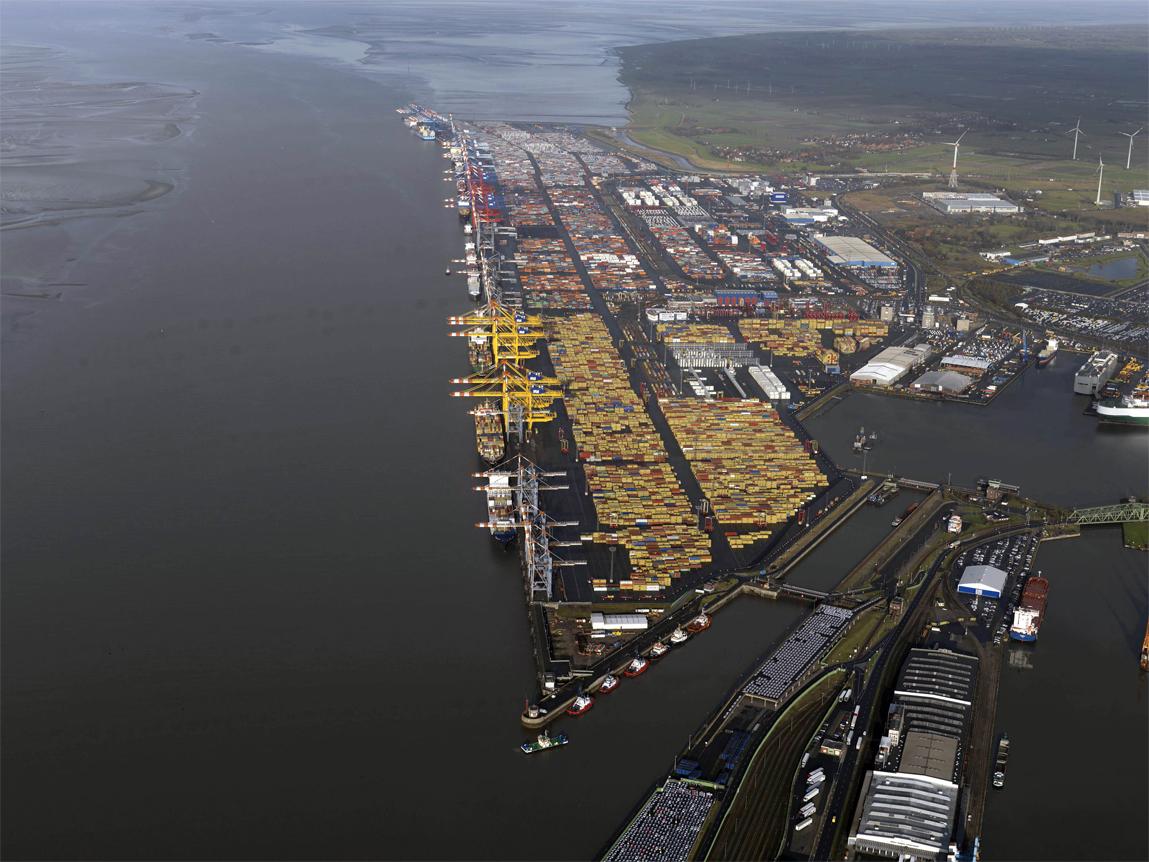
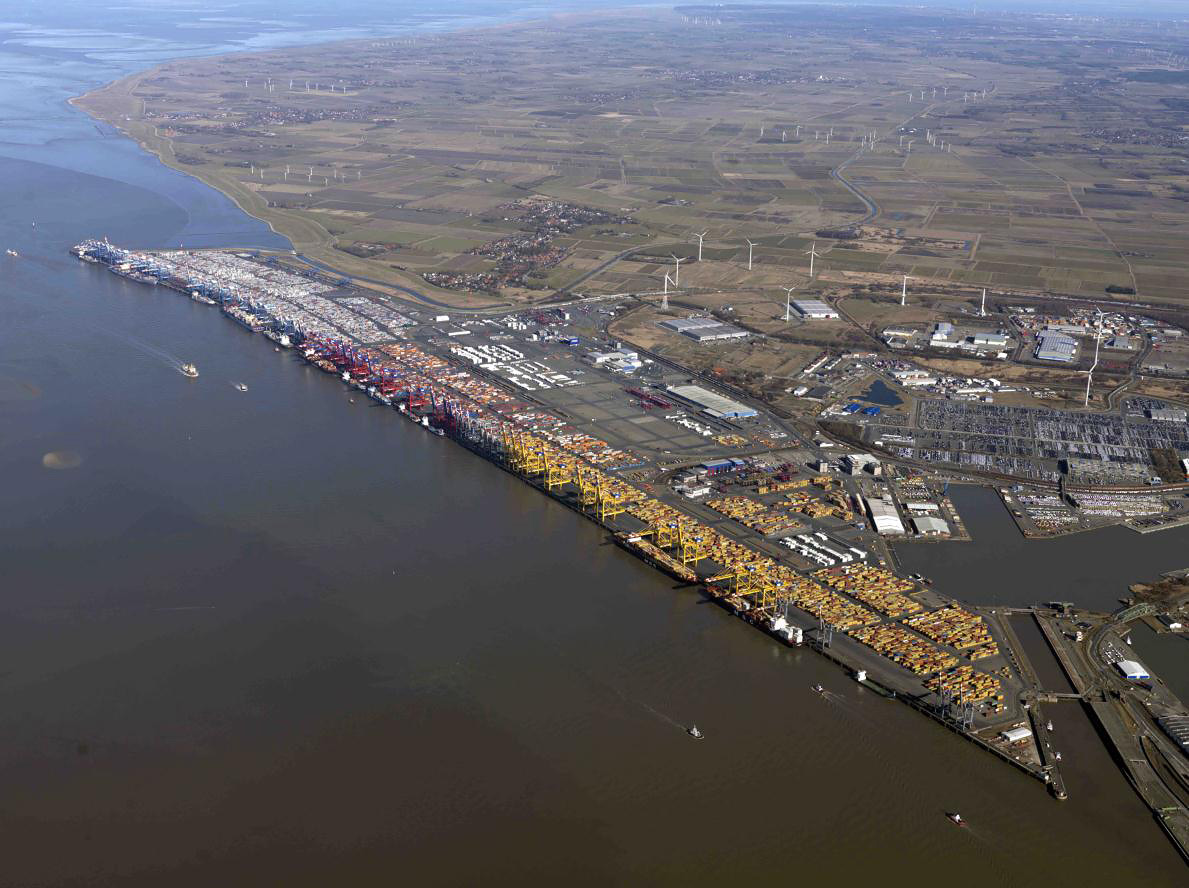
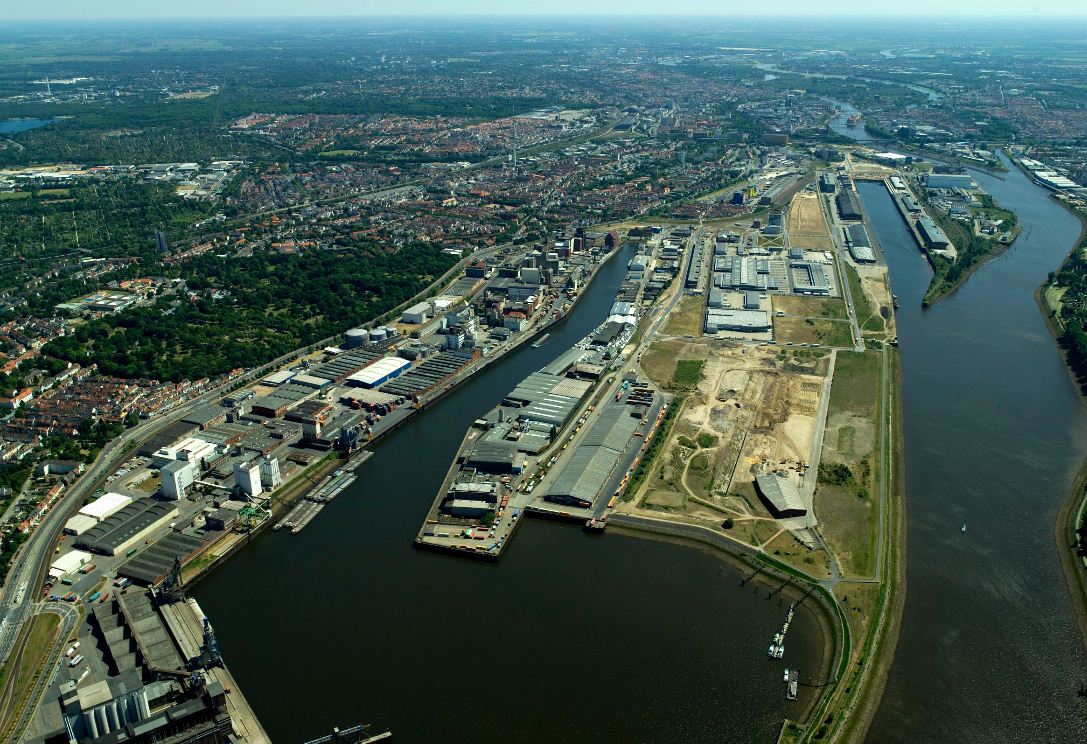
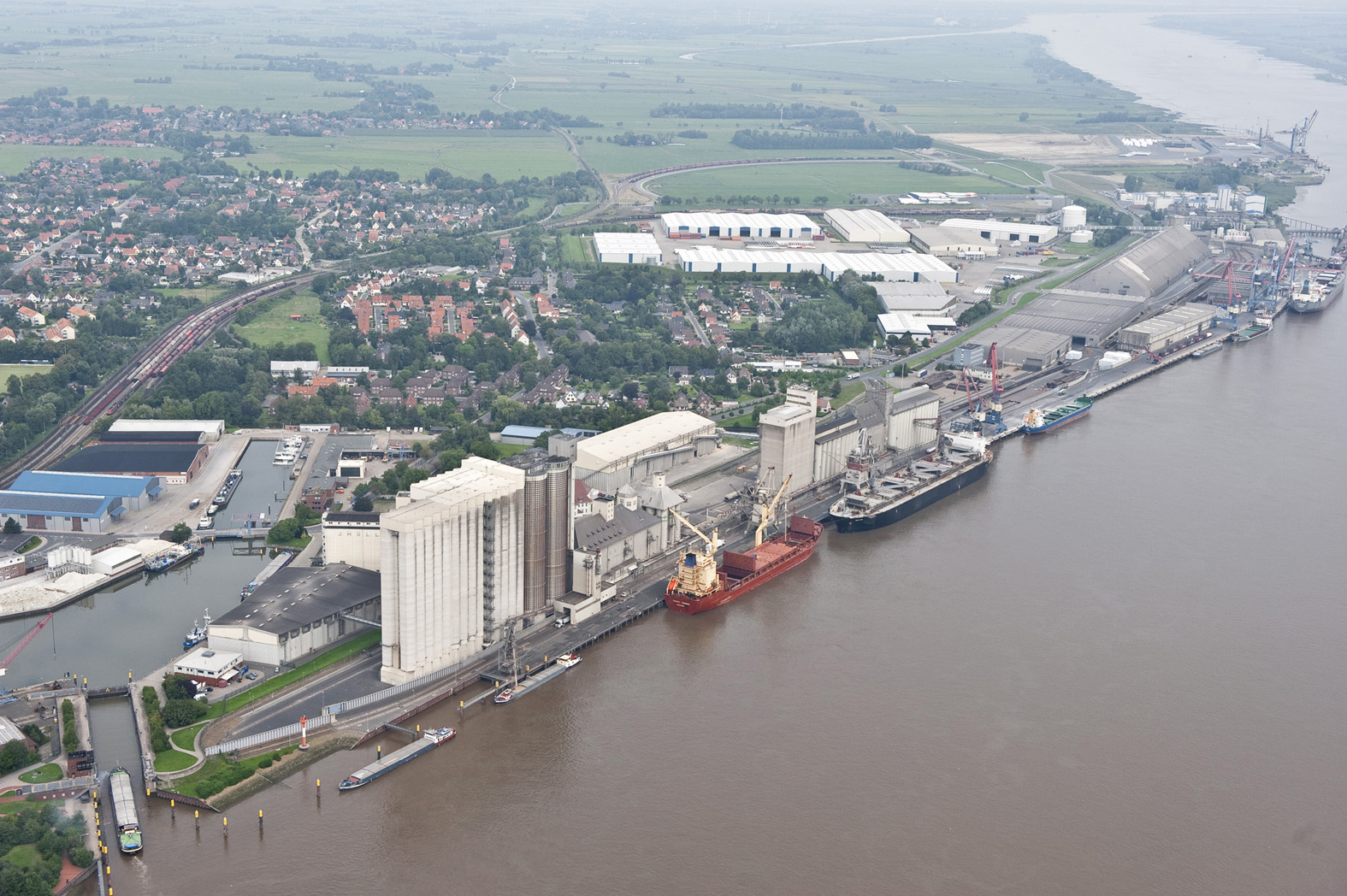
El puerto alemán de Bremerhaven, un ejemplo a seguir en Vigo
La ciudad sumida en una crisis similar a la viguesa despegó con esta nueva industria
09:08
L.P. - VIGO El estudio de Dosvalor realiza una interesante comparación entre el puerto alemán de Bremerhaven y el de Vigo. ¿Qué tienen en común? En el tamaño muy poco porque Bremerhaven es el décimo sexto en el ranking de los puertos más grandes en el tráfico de contenedores del mundo mientras que el de Vigo no aparece en la lista de los 100 primeros. Pero hay coincidencias en su actividad, el principal movimiento de este puerto germano es el de vehículos como ocurre en Vigo. Bremerhaven mueve más vehículos que cualquier otra terminal europea a excepción de Rotterdam. Su economía está basada en el tráfico marítimo, la construcción naval y la pesca comercial, pero estos sectores tuvieron una fuerte caída en los años 90. ¿Esto nos suena de algo verdad?, pregunta el presidente de Dosvalor, Juan Güell queriendo establecer un paralelismo con lo que ocurre en la actualidad en Vigo.
¿Cómo superaron el bache? Güell se remite al informe. "A principios del año 2000 las autoridades locales evaluaron los posibles medios de diversificación económica. Las ventajas competitivas de Bremerhaven se basaban en un importante know-how sobre conocimientos técnicos marítimos, una mano de obra experta en construcción naval y experiencia en el diseño y fabricación de maquinaria pesada. "Nada de eso nos falta en Vigo", enfatiza Juan Güell.
La apuesta de este puerto alemán por la construcción de sistemas para la energía eólica offsore no se hizo esperar. Bremerhaven atrajo la mitad de los 500 millones de euros invertidos en el desarrollo de este tipo de energía verde a lo largo de la costa del Mar del Norte alemán durante los últimos años. Se dice que el éxito de Bremerhaven se debe a una estrategia industrial clara e integrada apoyada por la utilización de unos terrenos de propiedad pública y el agrupamiento de distintas capacidades de producción dirigidas a un mismo sector.
La apuesta por la eólica marina atrajo a Bremerhaven a dos fábricas de turbinas eólicas offshore (REporwer y Multibrid); dos fábricas de turbinas onshore (PowerWind y Innovative Wind); a PowerBlades, que fabrica palas de más de 61,5 metros de largo para turbinas de 5 y 6Mw de REpower y a WeserWind Offshore Construcción, empresa especializada en el diseño y fabricación de acero pesado para los cimientos de los molinos marinos.
Las empreesas instaladas en Bremerhaven crearon en los últimos tres años 700 nuevos puestos de trabajo, además de mantener los ya existentes y esperan incrementarlos hasta los 1.200.
EL PUERTO DE BREMEN/Bremerhaven
ORGANIZACIÓN DEL PUERTO
Las operaciones portuarias y el comercio exterior son la base del Estado de Bremen. A lo largo de su historia, Bremen ha demostrado su fuerte compromiso en esos campos de actividad. Esto explica porque la constitución del Estado de Bremen explícitamente requiere que deben ser construidos y operados nuevos puertos, que la navegación y el comercio serán conducidos y que ambos serán más desarrollados para el bienestar de Bremen, Alemania y Europa. Las políticas y las guías para los puertos de Bremen son impuestas por el Senador (ministro) de los temas Económicos y Portuarios. Las responsabilidades de las cuestiones portuarias, tales como manejo del tráfico de buques y otros temas gubernamentales, están con la Autoridad Portuaria de la ciudad de Bremen [Hansestadt Bremisches Hafenamt]. Con efecto desde el primero de enero de 2002, el senado de Bremen ha transferido la responsabilidad por la construcción, el mantenimiento y la administración operativa de los puertos al puerto Bremen, una compañía privada limitada. Según una experiencia de 1998 realizada por la consultora Planco, los puertos tienen no menos de 81870 trabajos dentro del estado de Bremen o cerca de un cuarto del total de la fuerza laboral. De esa cifra, 58,872 trabajos que dependen de los puertos, mientras 22,998 son directamente empleados en las operaciones de la industria portuaria.
Accesible por mar y tierra
Bremerhaven está ubicado a 32 millas náuticas del mar abierto. El canal de navegación actualmente tiene una profundidad de 14 metros. Debido a las mareas, los barcos con un dragado en exceso de 12.50 metros están sujetos a restricciones de tiempo. Bremen, el puerto alemán más meridional, está en el Río Weser cerca de 60 kilómetros río arriba y puede ser alcanzado por los barcos oceánicos con dragados de más de 10.5 metros. Un factor crítico importante para fortalecer la competitividad del puerto, además de la eficiencia y el acceso al mar, es la calidad de las conexiones. Hoy, Bremen y Bremerhaven no tienen una excelente red ferroviaria a los mayores centros económicos en Alemania y los alrededores, ni una eficiente red ferroviaria presentando más de 200 kilómetros de caminos. El transporte ferroviario acapara casi el 50 por ciento del tráfico hacia y desde el puerto Bremen, si el tráfico local en los distritos vecinos de Bremen son ignorados. En el tráfico de contenedores de larga distancia, la porción de transporte por tren es de dos tercios. No existe sustituto para los caminos como una fina distribución de los trayectos de corta y media distancia. El transporte terrestre es el segundo mayor elemento para mover mercaderías desde el puerto Bremen. Las buenas conexiones a las redes de autopistas nacionales e internacionales son una importante característica de los puertos de Bremen y Bremerhaven. Los puertos de Bremen están también conectados, vía el canal Middle Weser y el Küstenkanal, a los ríos navegables. Un proyecto mayor, que actualmente está en la fase de planificación, es desarrollar el Middle Weser para que este pueda ser cómodamente grande, 110 metros.
Inversiones para el manejo de contenedores
El Muelle Strom en Bremerhaven, centro de la terminal de contenedores Wilhelm Kaisen, es la sección más importante del puerto, manejando 30 millones de toneladas anualmente. Cerca de 3 millones de TEUs son actualmente manejados ahí cada año. Los 3000 metros del Muelle Strom en el estuario del Río Weser tiene doce amarraderos en total, razón por la cual hasta el barco porta contenedor más grande del mundo puede hacer rápido. En respuesta al continuo crecimiento en el tráfico de contenedores, están ahora bajo construcción o en planificación más planes de expansión, Terminal de Contenedores (CT) IIIa, un amarradero adicional de 340 metros, estará disponible para el último trimestre de 2003. Además serán agregados cuatro muelles más cuando la Terminal de Contenedores IV, en estos momentos en la fase de planificación, este finalizada. Esto significa que Bremen y Bremerhaven podrán obtener beneficios del pronóstico de crecimiento en el mercado de transporte de contenedores a futuro.
http://www.userway.com/argentina/transporte/puertos/Alemania/bremen.htm
Documentando la crisis: El puerto de Bremerhaven, al borde del colapso
El puerto de Bremerhaven (literalmente, el puerto de Bremen) es el que registra mayor trasiego de coches nuevos en toda Europa.
La terminal de carga de automóviles tienen capacidad para albergar cerca de 70.000 turismos. En época de bonanza económica, la cifra de coches estacionados se aproximaba a este límite, en un continuo ir y venir entre los que salían del vientre de los buques y los que inmediatamente ocupaban su lugar para poner rumbo a su destino al otro lado del mar.
Ahora la situación es algo diferente. Según la Bremer Lagerhaus Gesellschaft (BLG), la compañía que gestiona el puerto, actualmente se acumulan 90.000 coches a la espera de destino. Én las campas de automóviles ya no cabe ni un scooter, y se han tenido que habilitar nuevas zonas en la terminal de los contenedores.
Varios cientos están cargados en los vagones de ferrocarril; pero no porque vayan a abandonar el puerto, sino para hacer hueco en las explanadas para los coches que siguen llegando.
Esta semana, había atracados en el puerto 9 buques portacoches. Unos, esperando que se habiliten nuevas zonas para poder descargar. Otros, confiando en no tener que hacerse a la mar en unos días con las bodegas casi vacías.
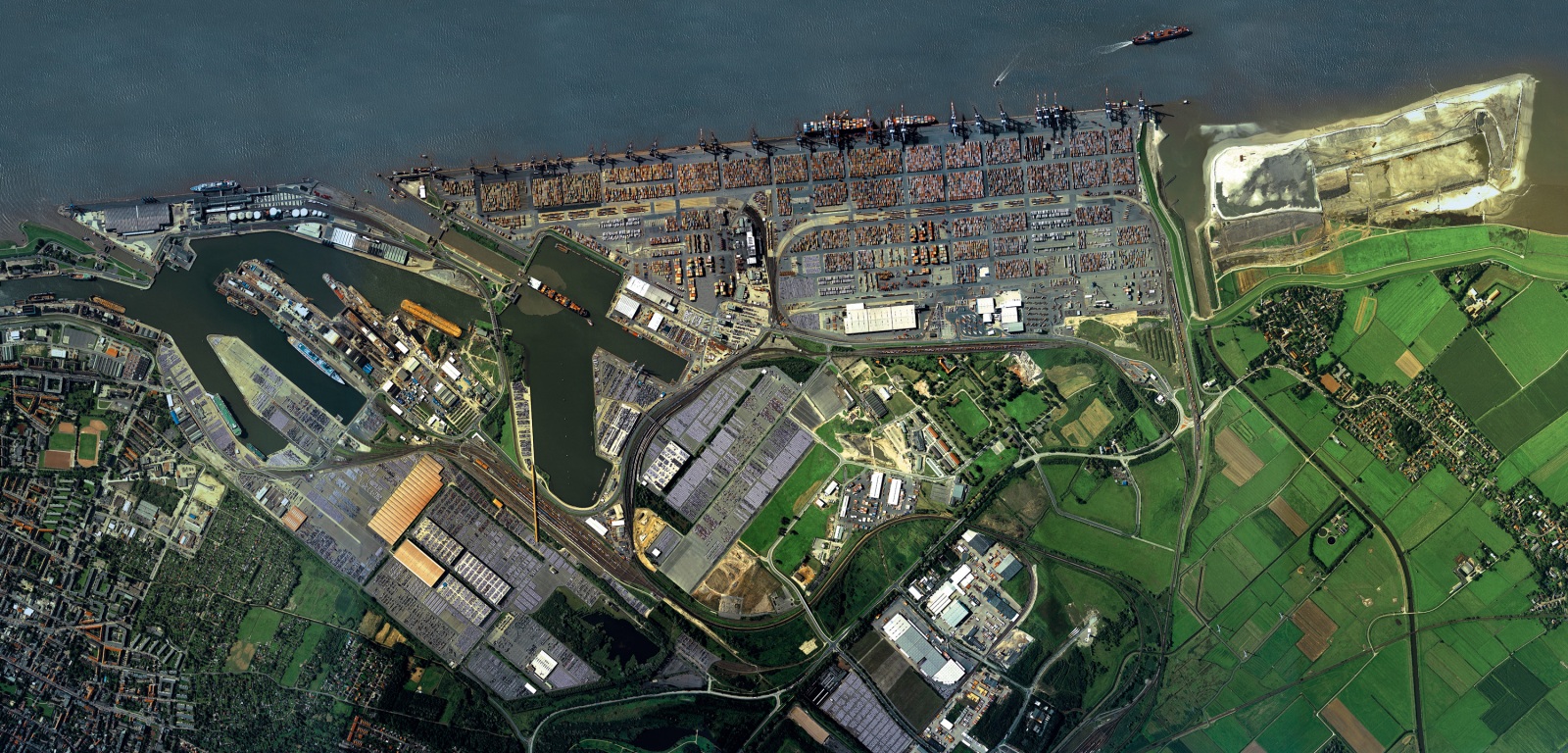
Vídeo:
Web recomendada: http://www.bremenports.de/
Contador: 23697
Inserción: 2012-08-02 15:14:17
Lugares a visitar en un radio de 100 km (en línea recta)
Mapa de los lugares a 100 km (en línea recta)
Mostrando Registros desde el 1 hasta el 0 de un total de 0
Visitas |
Más visitados Basílica de San Marcos 153329 Catedral de Notre Dame (París) 142835 Torre de Pisa 130416 Monte Saint-Michel 99609 Presa de las Tres Gargantas 79667 |
Incorporaciones |
Comentarios hazola Cúpula de la Roca gracias me... gera Buenos Aires las mejores fotos de la mejor ciudad del... Daniel M. - BRASIL San Francisco ... PEQUE Presa Chicoasén SERA QUE ALGUIEN ME PUEDE DAR MAS INFORMACIÓN DE ESTE PROYECTO ESTUDIO EN LA UNACH Y ES PARA UN... Mery Huaca Pucllana Muy interesante, muy buena la información y... |
 Tweet
Tweet


